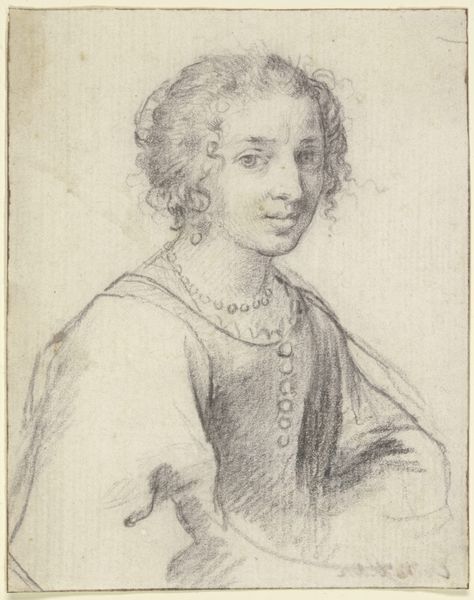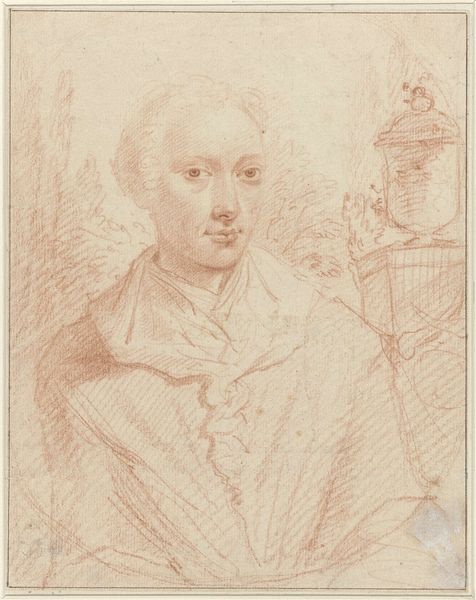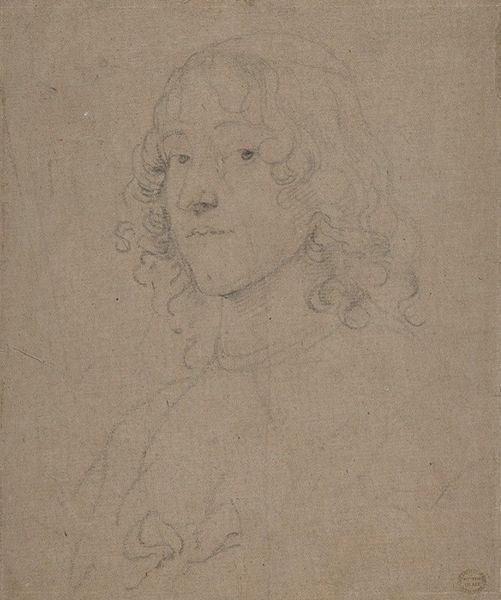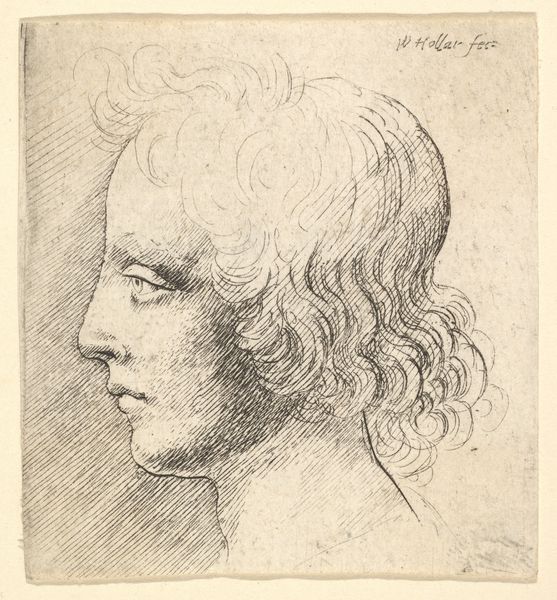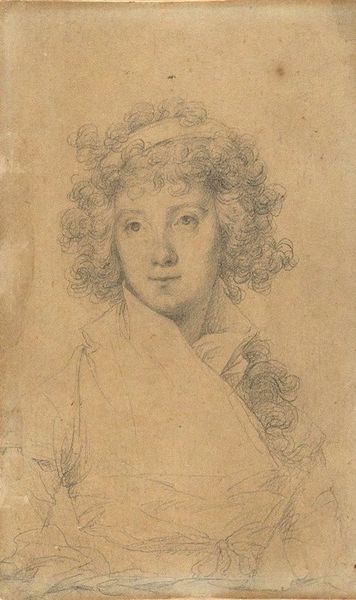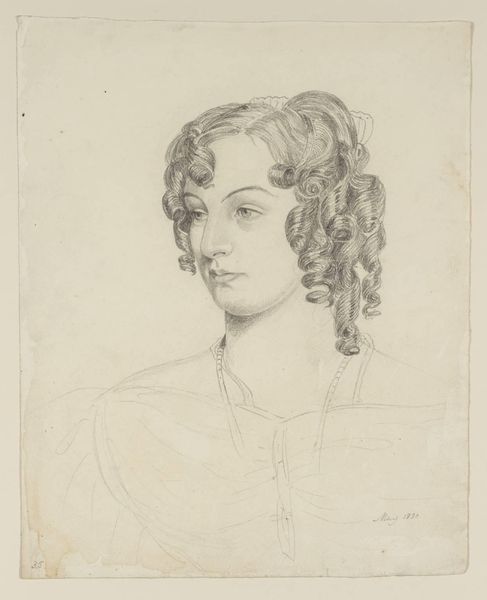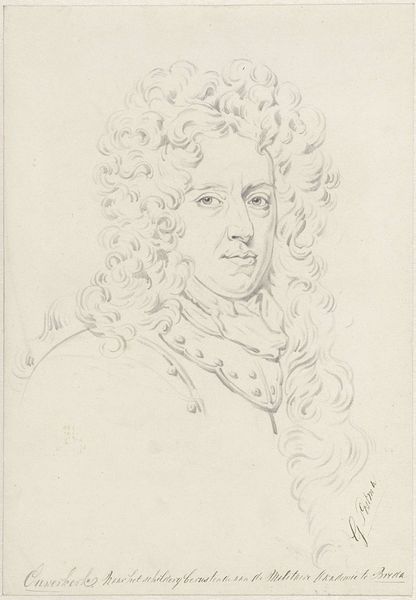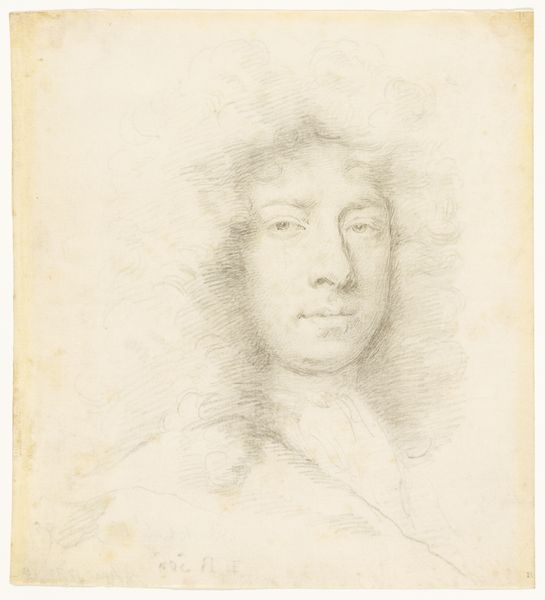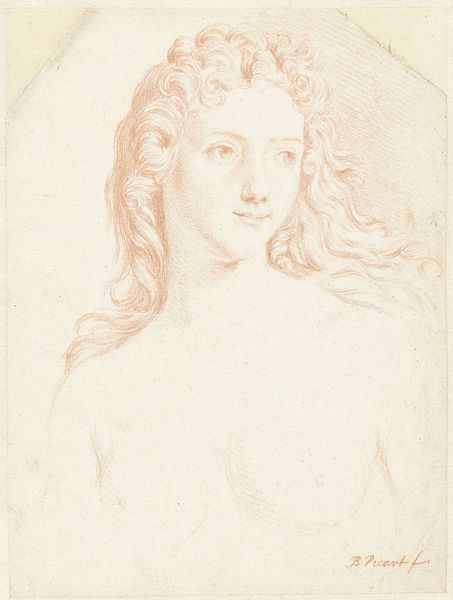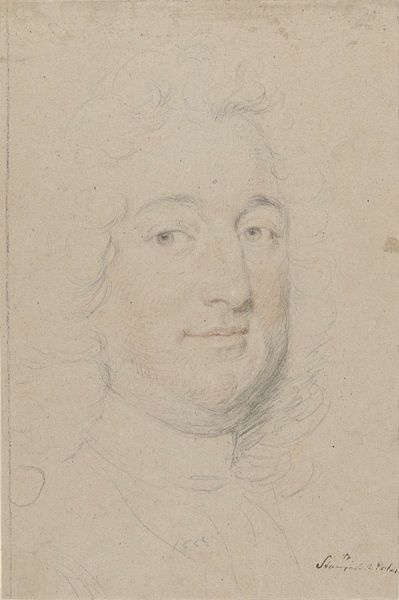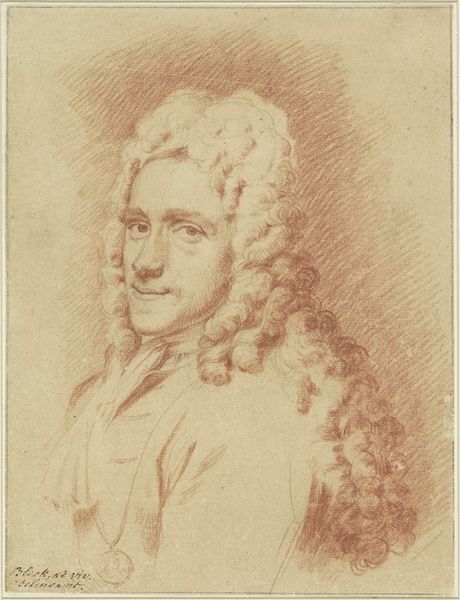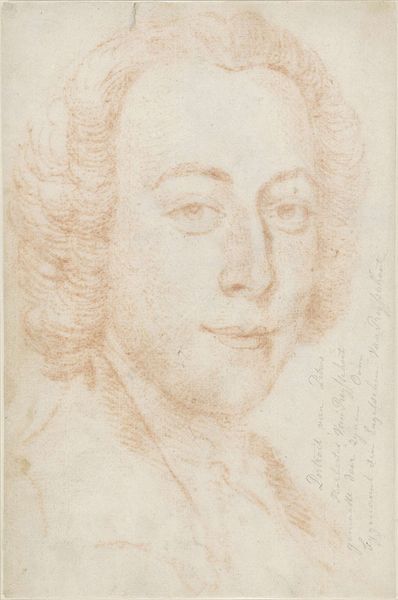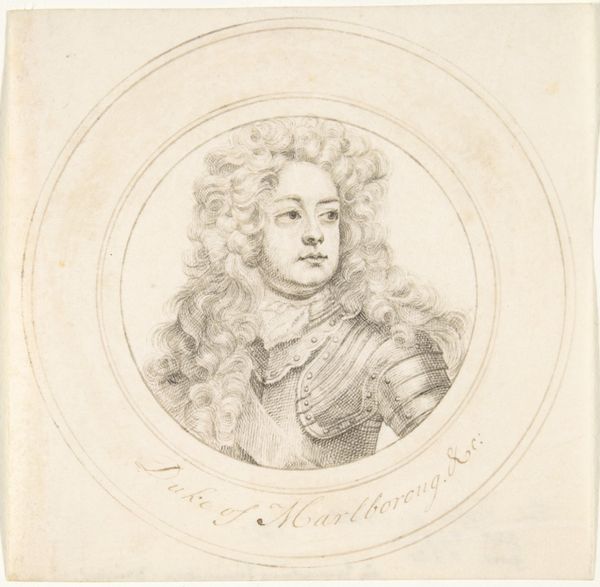
drawing, pencil
#
portrait
#
pencil drawn
#
drawing
#
baroque
#
dutch-golden-age
#
pencil sketch
#
figuration
#
pencil drawing
#
pencil
#
pencil work
Dimensions: height 237 mm, width 183 mm
Copyright: Rijks Museum: Open Domain
Curator: This drawing, a so-called Damesportret, which translates to "Lady's Portrait," is attributed to Caspar Netscher and dates to sometime between 1649 and 1684. The medium is pencil, a rather intimate choice, isn’t it? Editor: It strikes me immediately as a fleeting impression, almost as if Netscher were trying to capture a breath or a secret thought. There's such delicacy in the lines, particularly around the eyes. Curator: Indeed. Netscher was working in the shadow of grander artistic narratives in Dutch Golden Age portraiture, and portrait commissions served social and political purposes beyond just likeness, with clear sartorial and cultural coding. In his subtle strokes, the materiality of the medium itself almost disappears. Editor: Yet that disappearance allows us to glimpse something deeper. This portrait, devoid of heavy embellishments or obvious markers of status, suggests a move toward interiority, a rising trend and growing societal fascination, particularly among affluent classes, with selfhood during the later Dutch Golden Age. It’s hard to know her identity without inscription or heraldry, of course. Curator: True, the sitter remains anonymous, her social position only vaguely hinted at. But what I appreciate is Netscher’s formal treatment: see how the delicate hatching defines form, playing with light and shadow to give volume? There's a dynamic tension between the detail in her face and the almost ghostly rendering of her dress. This emphasis on geometry and linear relationships results in what is for me a captivating surface. Editor: I concur about Netscher's ability. Despite what feels like its preparatory nature, this pencil work communicates much about the changing social sphere. Wealth afforded greater emphasis on the individual and on inward reflection and observation. And Netscher manages to convey that nuance so elegantly. Curator: Perhaps these lines give more than a portrait but speak volumes about their era. Editor: Leaving us to consider who this lady might be, what was occurring at the Rijksmuseum during its history, and our relationships as modern viewers with representations of class and gender then and now.
Comments
No comments
Be the first to comment and join the conversation on the ultimate creative platform.

